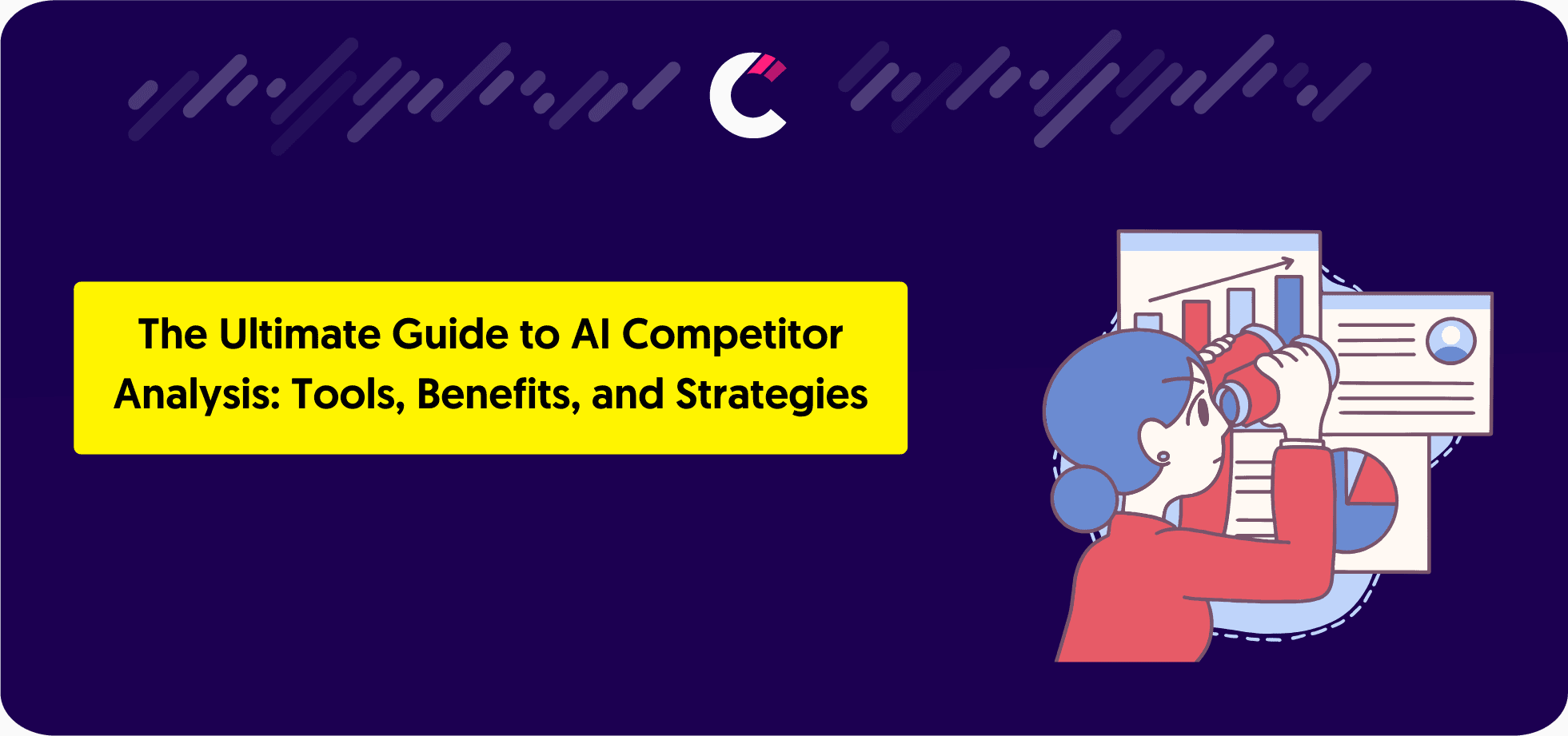
In the race to outsmart competitors, businesses are turning to smarter solutions. AI competitor analysis combines marketing intelligence tools with cutting-edge technology to decode your competitors’ strategies like never before. By automating data collection and delivering insights in real-time, these tools go beyond manual research to offer a deeper, faster understanding of the competition.
At its core, AI competitor analysis uses machine learning and predictive analytics to track competitor activities, analyze trends, and even anticipate future moves. Unlike traditional competitor analysis—which relies on manual reports and static data—AI tools dynamically adapt to market changes, providing insights when you need them most.
The differences are striking. Traditional methods often feel like playing catch-up, relying on outdated snapshots of competitor activity. AI solutions, on the other hand, monitor data continuously. This ensures businesses can react to changes like price adjustments, advertising shifts, or new product launches almost instantly.
The real value of AI-driven analysis lies in its precision. Instead of being overwhelmed by endless data points, businesses receive actionable insights, such as how a competitor’s new campaign might impact your market share or which channels they are prioritizing. This level of intelligence equips you to stay one step ahead, saving time and resources while sharpening your competitive edge.
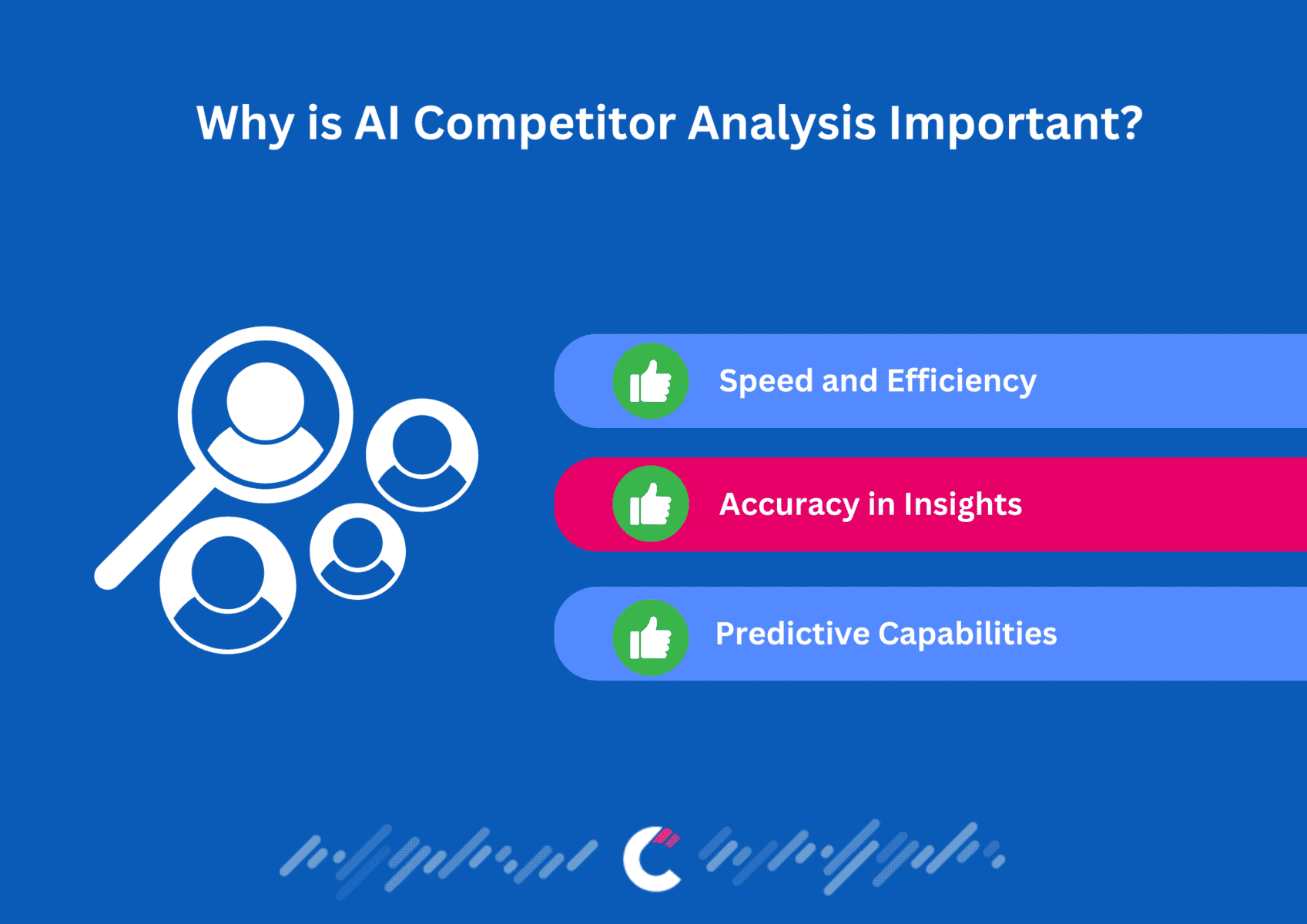
Staying ahead in a competitive market requires more than just intuition—it demands data-backed insights. Competitor analysis has always been a cornerstone of strategic planning, but with AI, it has reached a new level of precision and efficiency. By using marketing intelligence tools, businesses can identify opportunities, predict challenges, and refine their strategies based on solid evidence.
The benefits of leveraging AI in competitor analysis are compelling:
For businesses aiming to navigate complex markets, AI competitor analysis isn’t just helpful—it’s essential. By focusing on accuracy and actionable insights, these tools empower teams to focus on innovation rather than playing catch-up.
Traditional competitor analysis has been a staple of business strategy for years, but its shortcomings are becoming increasingly evident. These challenges often prevent businesses from staying competitive in dynamic markets:
These limitations make traditional competitor analysis less reliable in a data-driven world. As businesses grow and markets evolve, overcoming these challenges is critical for maintaining a competitive edge. This is where AI-driven solutions step in.
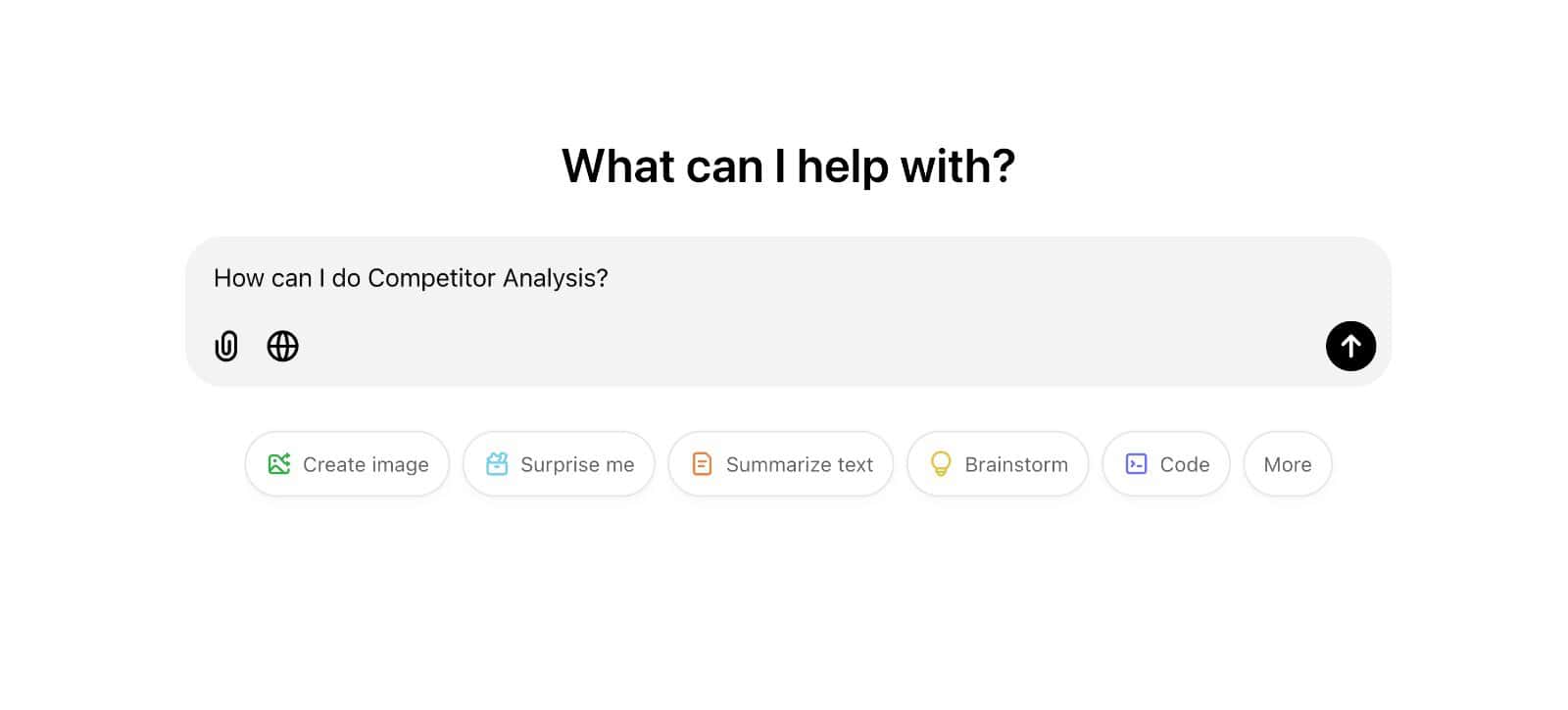
Generate a detailed competitor analysis report that includes:
Provide actionable recommendations to improve market positioning and outperform competitors.
[Insert details about your industry, competitors, and key metrics you’re tracking]
Use this prompt to identify clear strategies for enhancing your competitive edge.
Identify emerging competitors in your market and assess their potential impact. Include:
Offer insights into how to respond and maintain your market position.
[Insert details about your market landscape]
Stay proactive by addressing new threats before they disrupt your business.
Compare your product or service to competitors, focusing on:
Provide actionable recommendations to improve your product and value proposition.
[Insert information about your product, target market, and competitors]
Gain insights to refine your offerings and better meet customer expectations.
Analyze competitors’ advertising strategies, including:
Provide steps to optimize your campaigns for better performance.
[Insert your industry and competitor details]
Use this analysis to craft more effective and impactful advertising strategies.
Evaluate competitors’ social media strategies by analyzing:
Suggest ways to enhance your social media presence and drive higher engagement.
[Insert details about your competitors’ social media activity]
Leverage these insights to outshine competitors on key platforms.
Assess customer sentiment for competitors by analyzing:
Provide recommendations for improving customer experience and value.
[Insert details about your competitors and target audience]
Use this prompt to address unmet needs and build stronger customer loyalty.
Predict competitors’ future actions, such as:
Offer recommendations to preemptively counter their moves and maintain an advantage.
[Insert details about competitors and market trends]
Stay ahead by anticipating market shifts and acting proactively.
Create a benchmarking report comparing your KPIs to competitors. Include:
Suggest actionable improvements to close performance gaps.
[Insert your KPIs and competitors’ metrics]
Use this analysis to identify growth areas and outperform your rivals.
Analyze competitors’ SEO strategies, including:
Provide recommendations to improve your visibility and outrank competitors.
[Insert your SEO performance and competitors’ details]
Strengthen your online presence with targeted and effective SEO enhancements.
AI has redefined how businesses approach competitor analysis, addressing the limitations of traditional methods with unparalleled efficiency and accuracy. By leveraging marketing intelligence tools powered by machine learning and automation, AI transforms competitor research into a streamlined, data-driven process.
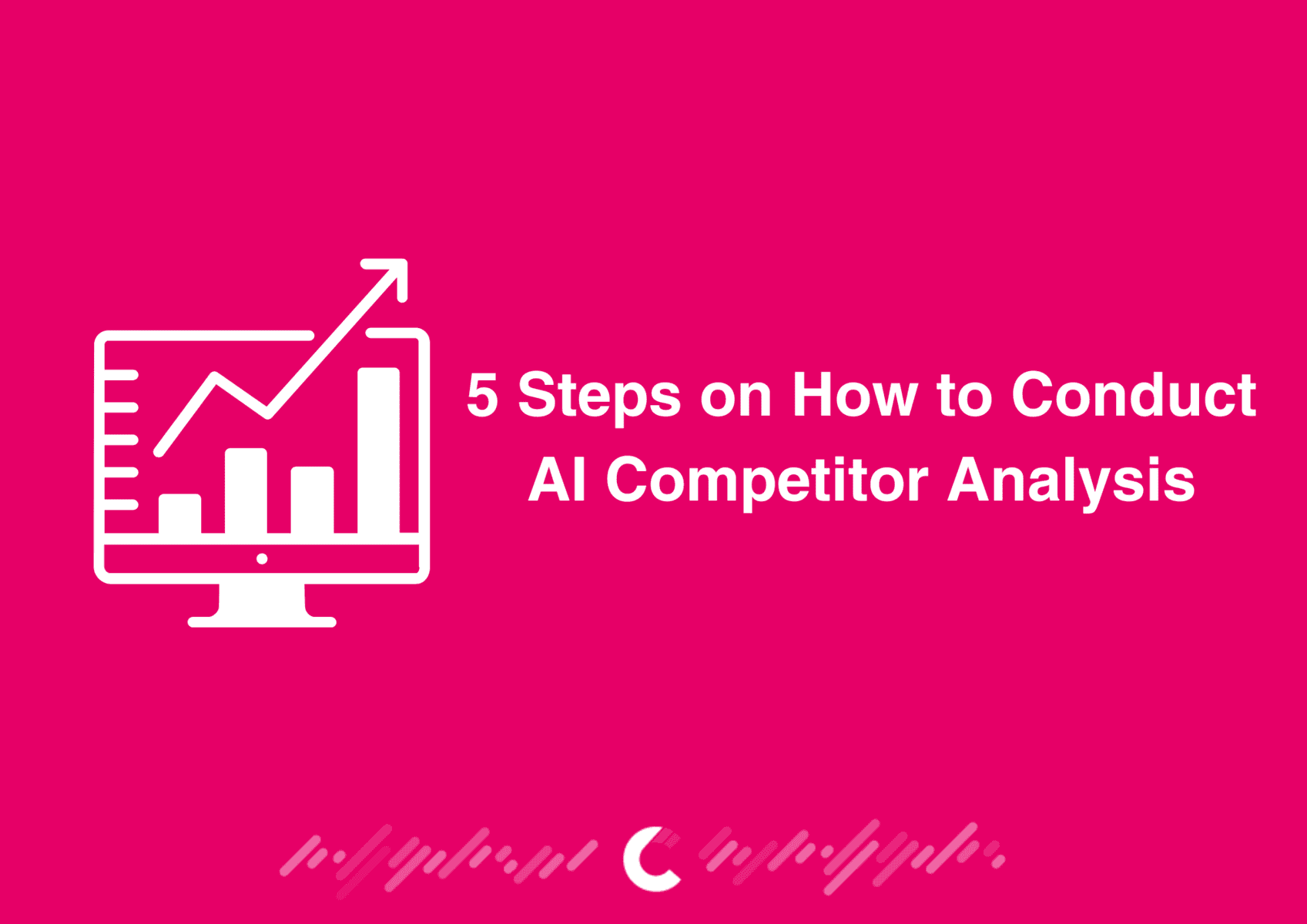
Implementing AI in competitor analysis requires a structured approach to ensure actionable insights and impactful results. Here’s a step-by-step guide to leveraging marketing intelligence tools for maximum efficiency:
When it comes to leveraging AI for competitor analysis, Competitors App stands out as a top choice for businesses of all sizes. It combines advanced features, ease of use, and actionable insights to help you stay ahead of your rivals.
Key Features
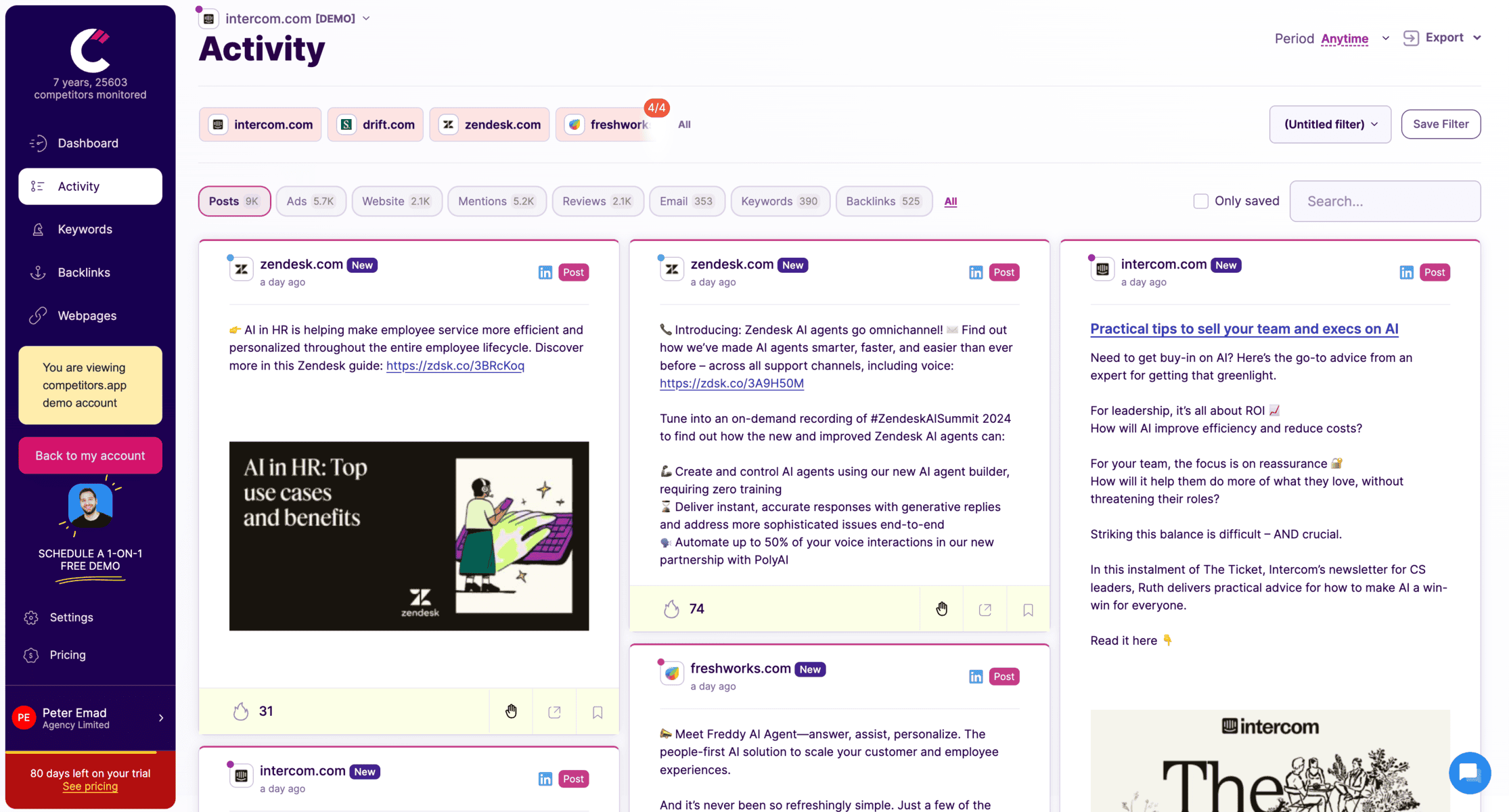
Tracks competitor social media updates across LinkedIn, Facebook, Twitter, and more.
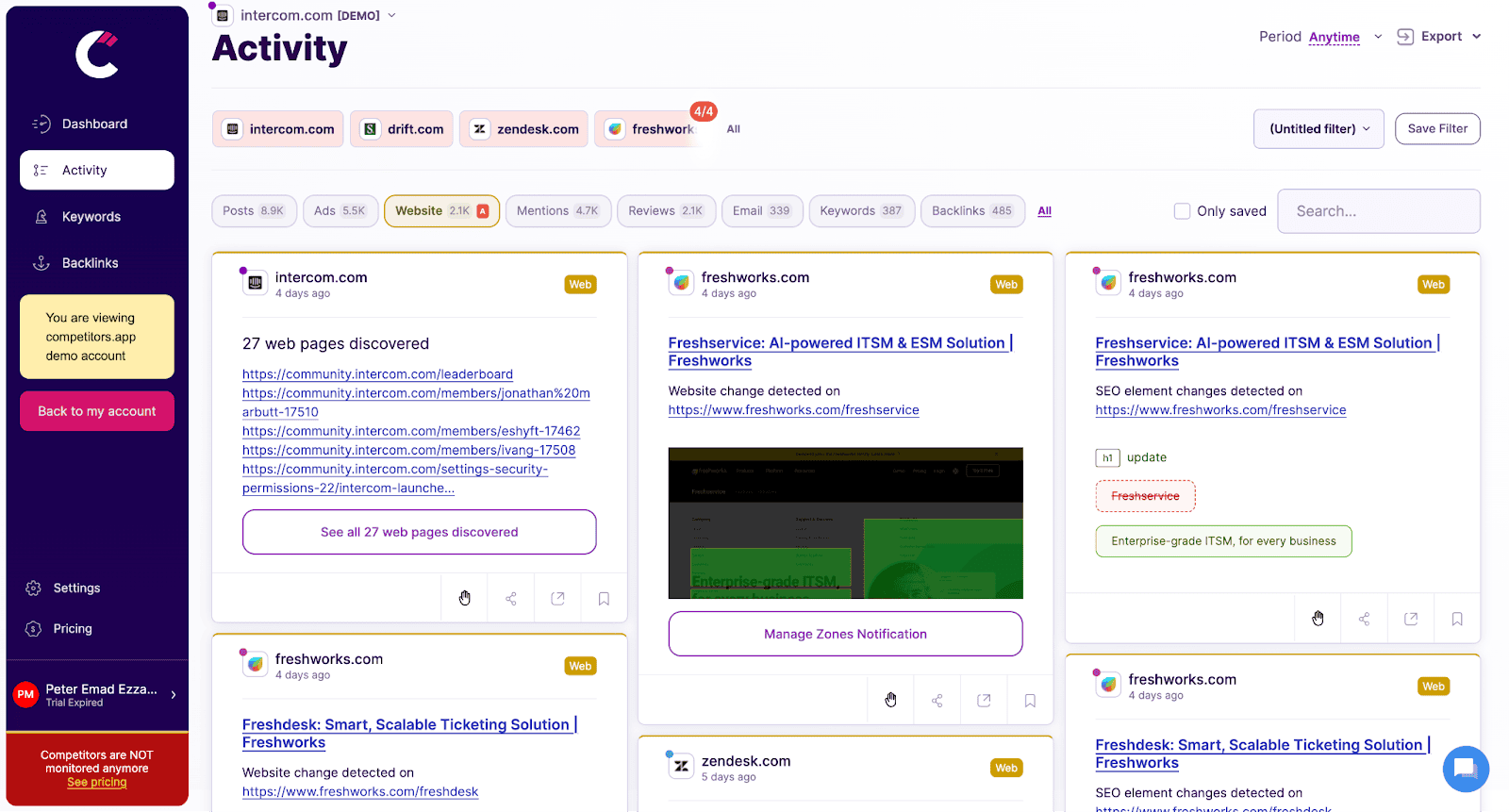
Monitors changes on competitors’ websites, such as product updates, pricing adjustments, and new messaging, providing instant alerts to help sales teams respond promptly.
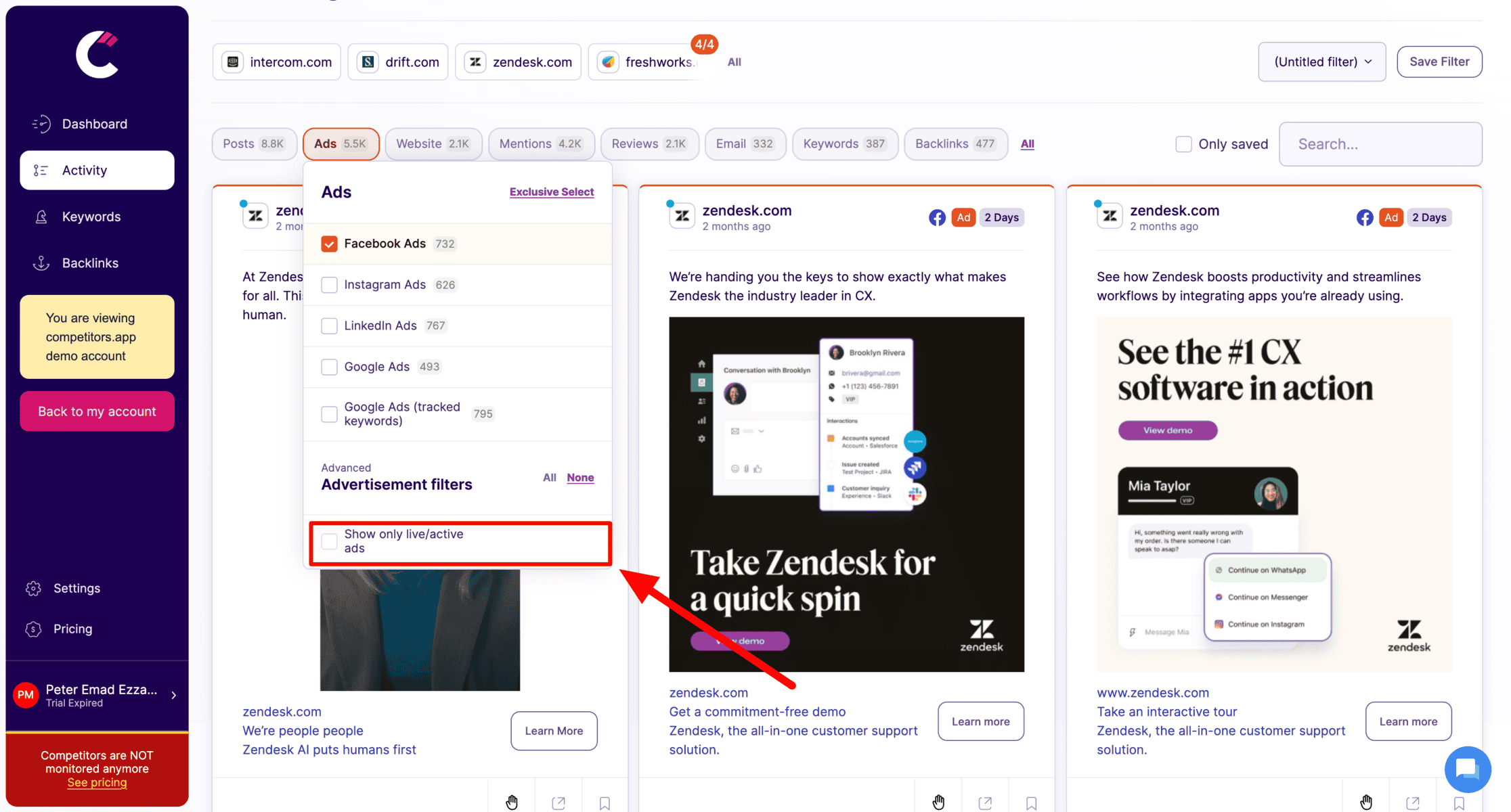
Tracks digital ad campaigns across platforms like Google Ads, Facebook, LinkedIn, and Instagram. It provides details on ad creatives, spending, and performance metrics, helping teams analyze successful ad strategies.

Analyzes competitors’ keyword strategies, organic rankings, and backlinks, allowing teams to refine their own SEO tactics and boost search visibility.
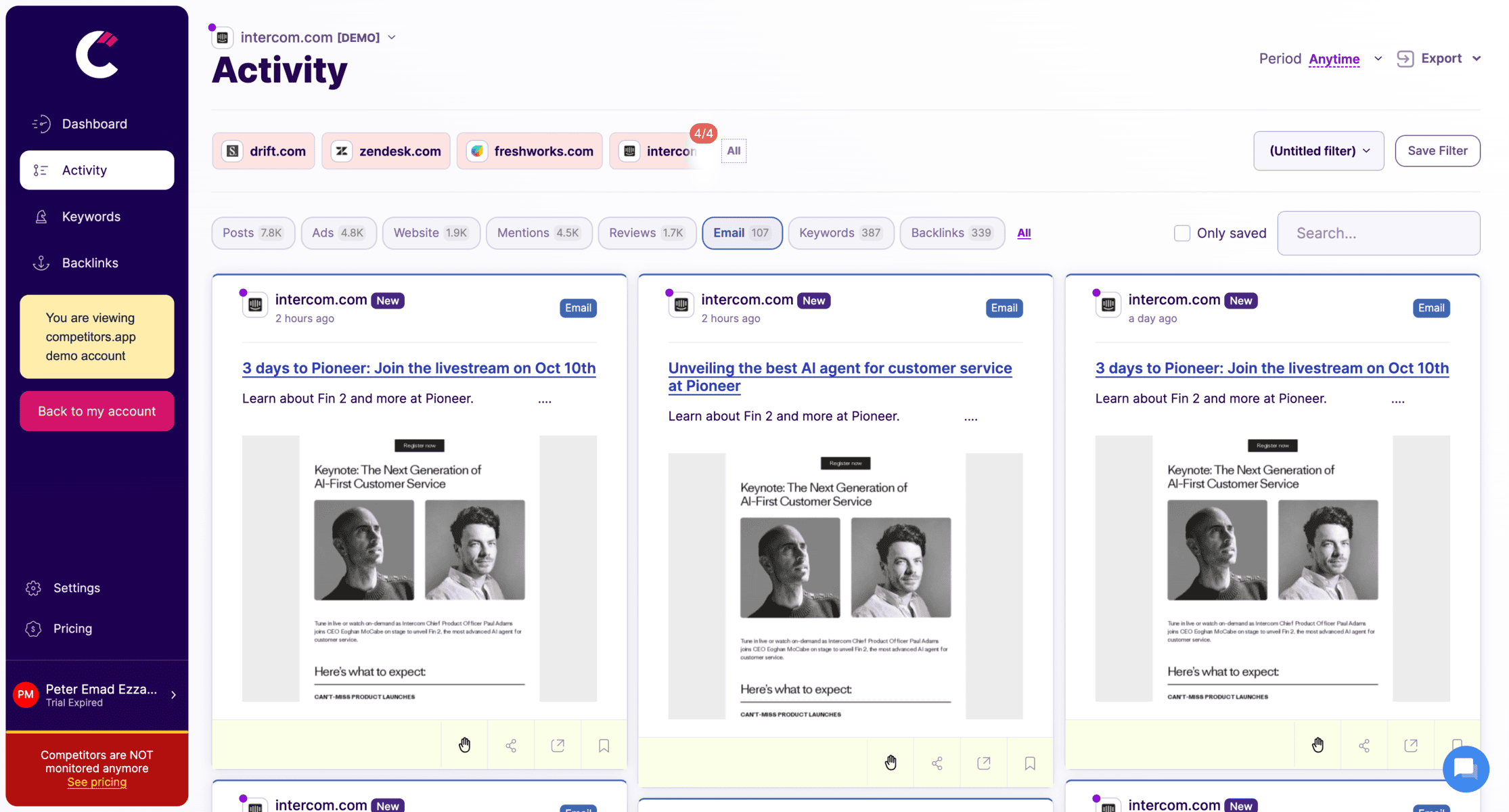
Tracks competitors’ email campaigns, including content, frequency, and engagement metrics, helping sales teams understand email tactics that drive engagement and conversions.
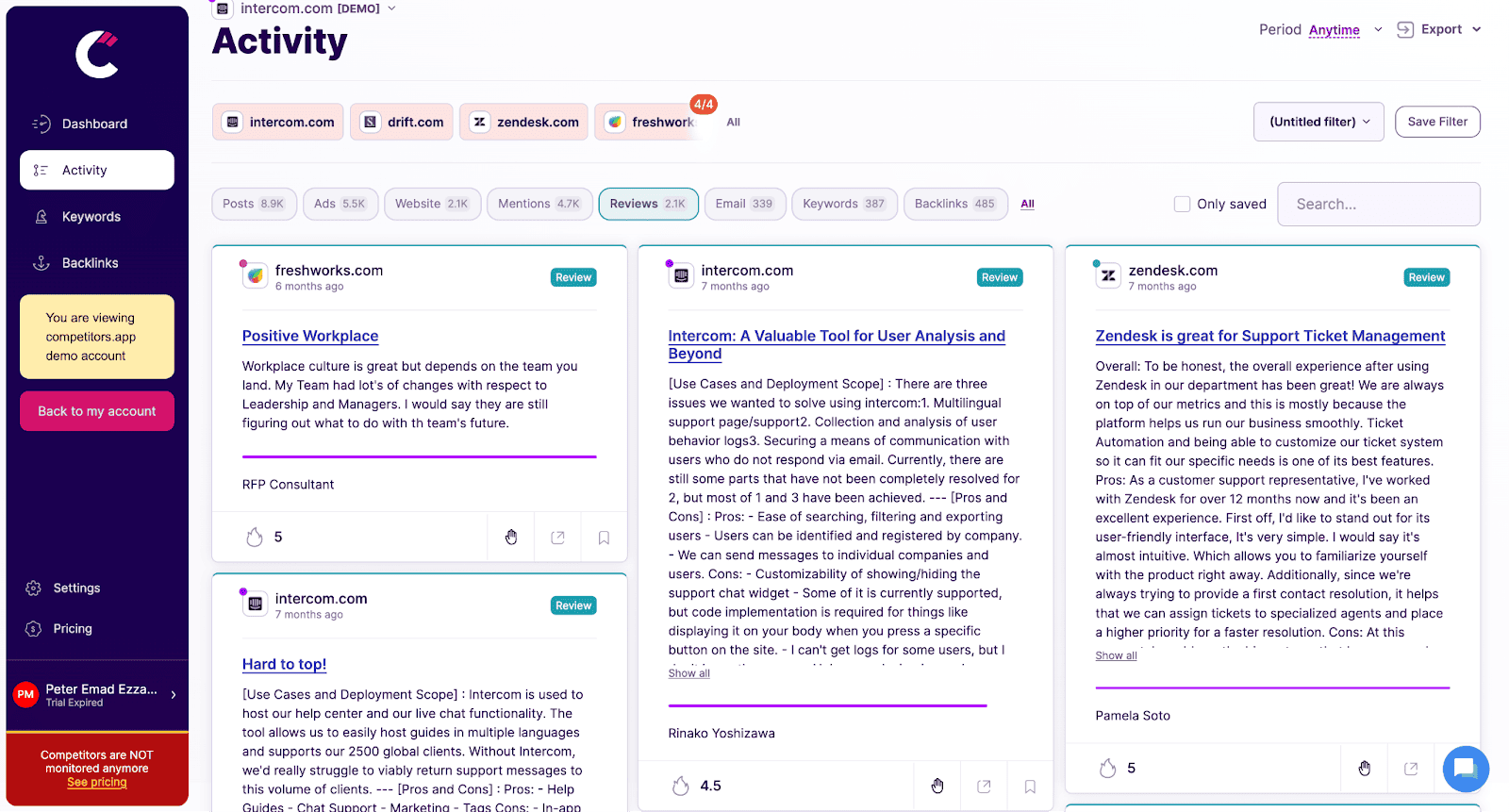
Analyzes customer reviews and ratings for competitors, providing insights into customer feedback, pain points, and product strengths, helping teams craft better sales pitches.
Selecting the right AI-powered competitor analysis tool is critical to achieving actionable insights and maximizing your investment. When evaluating your options, prioritize tools that offer the following key features:
AI-powered competitor analysis offers businesses a wide range of applications to improve their strategies and decision-making. Here are some of the most impactful use cases:
AI-driven competitor analysis uses tools powered by machine learning to gather, analyze, and interpret competitor data. These tools provide real-time insights, identify trends, and predict competitor strategies, helping businesses make informed decisions.
AI tools pull data from various sources, including competitors’ websites, social media platforms, ad campaigns, product reviews, and market reports. They use automation and algorithms to process large datasets efficiently and extract meaningful insights.
Competitors App offers:
Yes, many AI tools are designed for businesses of all sizes. Affordable options like Competitors App start at $19/month, offering scalable features that can grow with your business.
AI competitor analysis tools are no longer a luxury—they’re an accessible and essential resource for businesses aiming to stay competitive in fast-changing markets.
Competitors App SRL
support at competitors.app
Sanzienelor 3, Sibiu, Romania
+1 (302) 208-7954